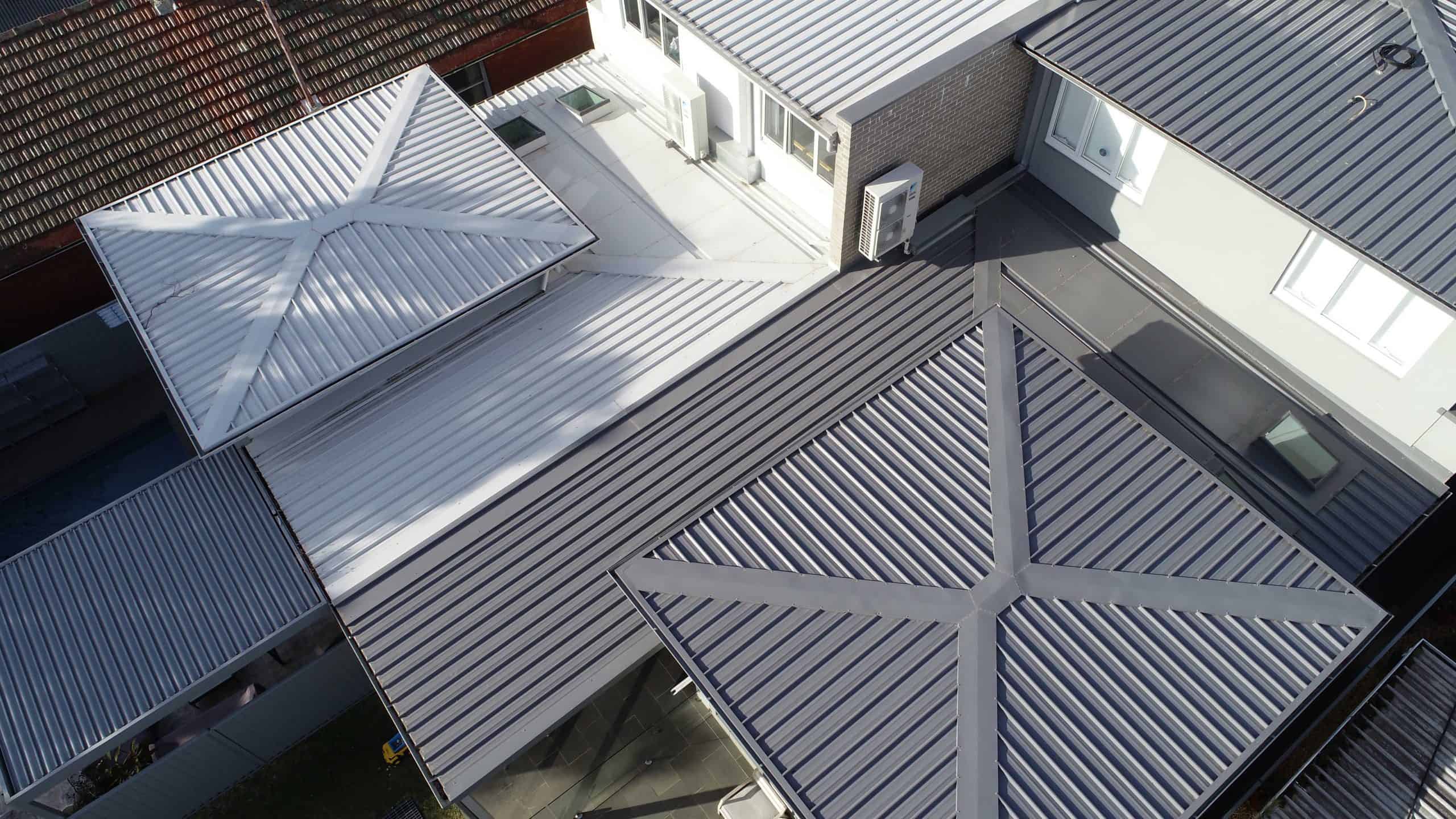Metal roofing comes in a range of configurations and can be made up of steel, aluminium, zinc alloy, and copper. Aluminium and steel are the most popular choices due to their durability, flexibility, and cost. But in higher end roofing, copper, stainless steel and alloys are also used.
Metal roofing offers a range of benefits, including energy efficiency, durability, low maintenance, and easy installation. But it has some drawbacks too. Let’s have a look at the pros and cons of metal roofing.
Benefits
WEIGHT
- Metal roofing is lightweight. This makes it easier to transport, reducing the costs and impacts on the environment. It also makes it easier and quicker to install.
- Due to its weight, metal roofing requires less complicated structural supports. This means less time and money spent planning internal columns, resulting in a more unimpeded open plan space.
- Metal roofing is consistent in its weight and highly resistant to moisture. Concrete or terracotta tiles are porous, absorbing water and becoming heavier during wet weather. Metal roofing deflects water rather than absorbing it, meaning it can be readily collected for use as grey water.
ENERGY AND ENVIRONMENT
- Metal roofing is designed to reflect heat and light. This keeps the temperature down on the inside of your house and saves on energy consumption such as cooling.
- Highly resistant to troublesome features common in the Australian landscape, metal roofing offers superior protection against fires. Metal is non-combustible and the sheets are more easily sealed to protect against airborne ash and embers. The metal sheets are also resistant to insects, including termites.
- Metal roofing offers high levels of water resistance. This protects against rot, mildew and mould. Mould and mildew intrude in homes during damp conditions, making them unhealthy places to be. Once mould and dampness sets in, it can be nearly impossible to get rid of it, especially when shady, damp conditions persist. Metal is leak-resistant, keeping your roof rot, mould and damp free.
MATERIAL AND DESIGN
- Metal roofing does not require a high pitch and can cover expansive floor plan areas with greater flexibility.
- An eco-friendly roofing choice, metal roofing is 100 % recyclable and one of the most commonly re-used building resources. The result is a far smaller carbon footprint compared to other roofing.
- Metal roofing such as Colorbond is colour bonded, meaning the paint is baked or bonded into the metal. This makes it colourfast so it stays looking good for years without the need for repainting.
Drawbacks
Metal roofing does have some drawbacks. Some common complaints about metal roofing include:
- Denting – hail storms and wind damage may impact on the roof and cause it to dent.
- Noise – Metal is a noisier roof covering than tiles. Insulation against noise is an option and can be achieved by installing a plywood sheath.
- Replacement and Repairs – Replacing metal roofing can be more involved than shingles or tiles. Metal roofing comes in sheets so a whole sheet will need to be replaced when damage occurs.
- MISCONCEPTION: Lightning – Some people are concerned about metal being an electrical hazard. Contrary to common belief lightning is not attracted to metal and this is an unwarranted concern. In fact, metal roofing is preferable in a lightning storm as it is fire resistant and will protect your home in the unlikely event of a lightning strike.
If you would like to learn more about metal roofing including Colorbond, or for any other roofing enquiries, contact One Stop Roofing today.


